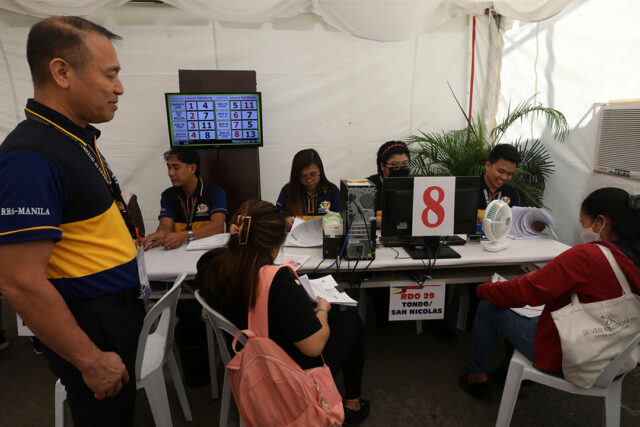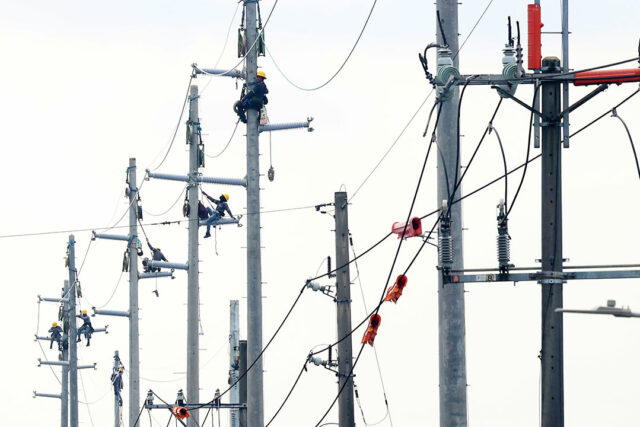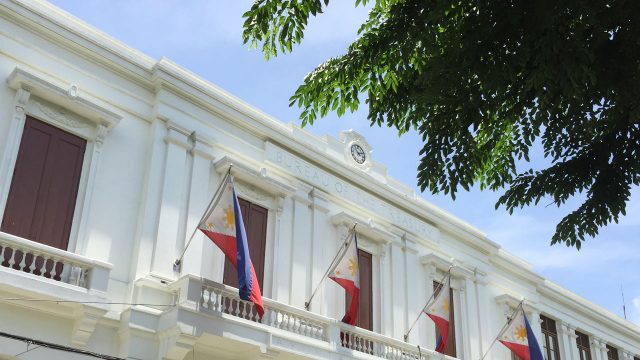New taxes eyed by DoF likely to face opposition

By Kyle Aristophere T. Atienza, Reporter
THE MARCOS government will have a difficult time convincing Congress to pass new tax measures amid high living costs, analysts said, after the Department of Finance (DoF) chief hinted at pushing new taxes.
Philip Arnold “Randy” P. Tuaño, dean of the Ateneo School of Government, said lawmakers are unlikely to approve new tax measures that would affect the general public after the Corporate Recovery and Tax Incentives for Enterprises to Maximize Opportunities for Reinvigorating the Economy (CREATE MORE) Act was signed into law.
“This may create an unfavorable impression that the administration is aligning themselves to large businesses and foreign investors to the detriment of the middle and lower income classes,” he said in a Facebook Messenger chat.
President Ferdinand R. Marcos, Jr. on Monday signed into law CREATE MORE, which lowers the corporate income tax (CIT) rate and provides more incentives for businesses registered with investment promotion agencies.
Mr. Tuaño noted there was public backlash over the Tax Reform for Acceleration and Inclusion (TRAIN) Act, the first part of the Duterte administration’s comprehensive tax reform package.
It restructured and reduced the rates of personal income tax but imposed higher taxes on tobacco products, petroleum products, automobiles, several nonessential services, sweetened beverages and mineral products.
“In the previous tax reforms under TRAIN, the perception was that by reducing personal and corporate income taxation but increasing excise and value-added taxes, the government was favoring enterprises and higher income groups, and this could also happen again,” Mr. Tuaño said.
“Historically, reforms like the expanded value-added tax law faced backlash due to perceived burdens on everyday consumers, fueling public resistance to any additional tax increases.”
The implementation of CREATE MORE is expected to lead to about P5.9 billion in revenue losses from 2025 to 2028, the Palace said.
Asked how the government could offset these losses, Finance Secretary Ralph G. Recto said: “We have other revenue measures which we’re pursuing. I just discussed also with the Speaker and the Senate President some financial taxes that we are reconsidering.”
“We just plan accordingly. If there’s a revenue loss here, then we look for another bill that will gain the revenue,” he said on the sidelines of the signing ceremony for CREATE MORE on Monday.
Jonathan L. Ravelas, senior adviser at professional service firm Reyes Tacandong & Co., said Mr. Recto’s response was to ensure that “whatever erosion in revenue due to CREATE MORE, there is a source to plug it.”
“They have a potential tax in mind to pass. These could have been some of the measures that were not implemented by the previous administration,” he added in a Viber message.
Mr. Ravelas also cited the proposed tax on junk food and sweetened beverages, which then Finance Secretary Benjamin E. Diokno said could add about P70 billion to state coffers while addressing diseases related to poor diet.
The proposed excise tax on single-use plastics, which was already approved on third and final reading at the House of Representatives, is a priority legislation of the Legislative-Executive Development Advisory Council.
But Environment Secretary Maria Antonia Yulo-Loyzaga last month told BusinessWorld on the sidelines of a Palace briefing that the bill could only advance in Congress if the country comes up with cheaper alternatives to plastic.
Another fiscal measure on the LEDAC’s priority list is the proposed rationalization of the mining fiscal regime.
The proposed motor vehicle road user’s charge has not been included in the list, which was last updated in June.
Meanwhile, Mr. Recto’s latest remark on pursuing new “financial taxes” — a shift from his previous statements that the government would not introduce new taxes — could mean that the government was struggling to find new revenue sources.
“The fact they are looking for alternatives indicates there is a shortcoming that needs to be filled,” John Paolo R. Rivera, a senior research fellow at the Philippine Institute for Development Studies, said in a Facebook Messenger chat.
In the face of inequalities, the government should consider taxes on wealth or certain luxury items, which would not affect lower-income households, he said. The government may also consider higher taxes on high-emission industries to incentivize “cleaner business practices while generating new revenues.”
Mr. Rivera said the government should also boost non-tax revenues by improving tax compliance, streamlining collections and expanding public-private partnerships for infrastructure and development projects.
Hansley A. Juliano, who teaches politics at the Ateneo, said the absence of a strong opposition would enable the Marcos administration to push new tax proposals in Congress.
“Considering there’s really no opposition figure reaching the Senate Magic 12 at the moment, administration allies clearly find it easy to get ahead with these kinds of possibly unpopular policies,” he said in a Facebook Messenger chat.
The Philippines will hold midterm elections next year, with 55 people vying for 12 Senate seats. Filipinos will also elect district representatives and other local officials in an election seen to be a referendum of the administration’s performance in the previous years.
As the midterm elections approach, fiscal difficulties will “present opportunities for candidates to project themselves against a variety of scapegoats and in support of alternatives,” Anthony Lawrence Borja, a political science professor at the De La Salle University, said.
Jose Enrique A. Africa, executive director of think tank IBON Foundation, said the government “desperately needs new taxes to expand urgent social and economic services as well to contain bloated government debt.”
“The government needs to take the long view of what is needed for strategic economic development and transformation and then plan major revenue measures accordingly,” he added.
Leonardo A. Lanzona, who teaches economics at the Ateneo, said the government will “continue to rely on indirect taxes which corporations will only pass to their consumers,” amid fears higher taxes will discourage investments.
“In the end, fiscal consolidation is not achieved, and an economic crisis ensues,” he said.













